Patient
Bringing You Better Health.

Don’t Let Back Pain
Hold You Back!
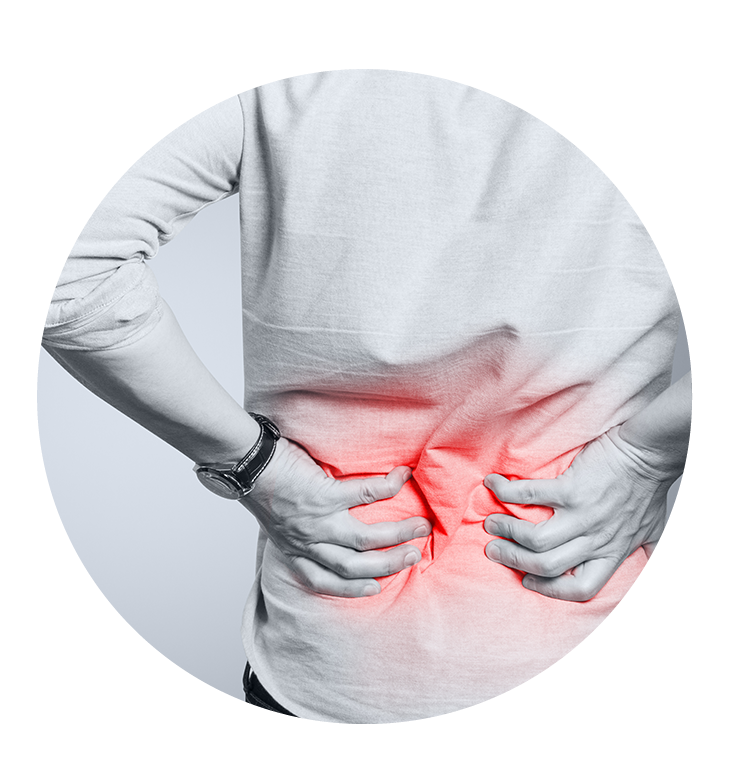
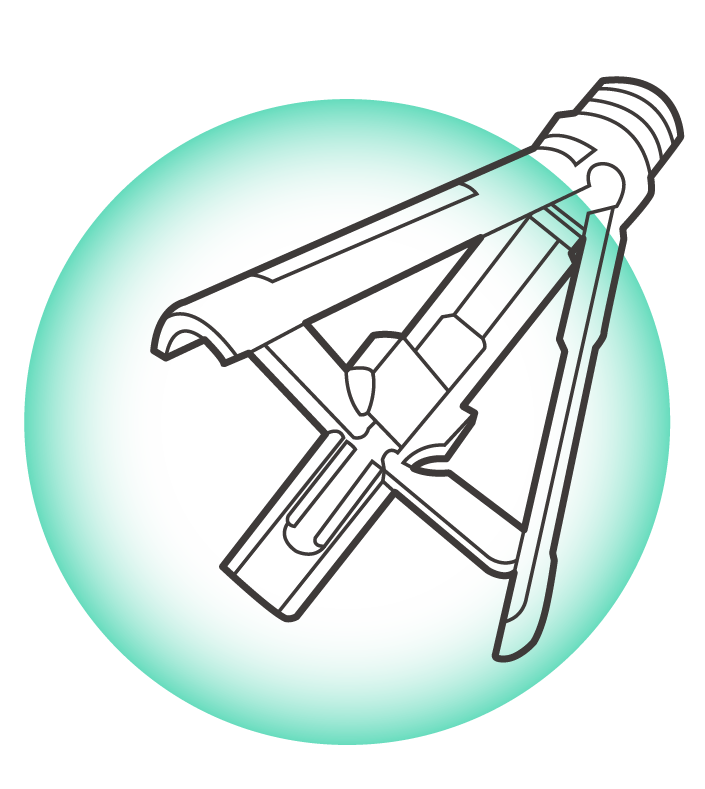
Tripod-Fix®
A revolutionary solution of
vertebral compression fracture(VCF).
Tripod-Fix a Revolutionary Solution of vertebral compression fracture (VCF).
Overview
What is vertebral compression fracture?
Vertebral compression fracture (VCF) occurs when one or more vertebrae in the spine collapse due to excessive pressure or weakening of the bone. These fractures most commonly occur in the thoracic (mid-back) and lumbar (lower back) spine. They can lead to significant pain, reduced mobility, and spinal deformity.
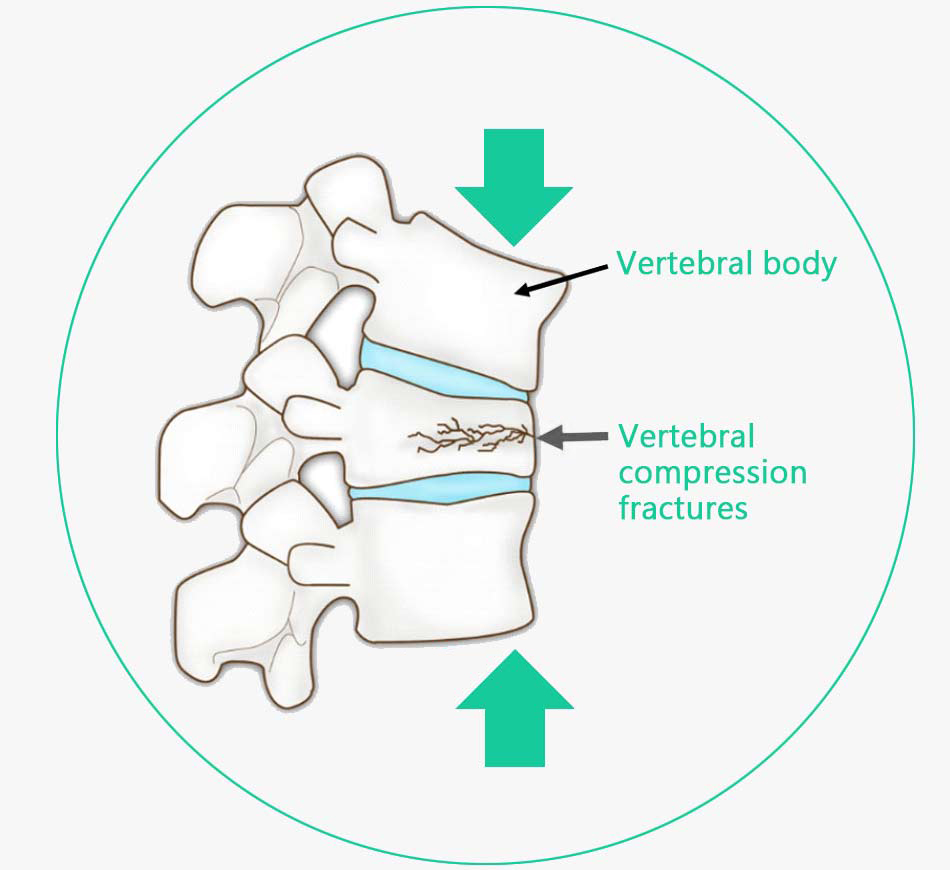
Symptom
- Sudden back pain (which improves with rest but worsens with movement).
- Limited mobility and flexibility, making it difficult to stand, walk, bend, or twist.
- Tingling or numbness in the back due to nerve compression.
- Tenderness at the fracture site.
- Muscle weakness or spasms.
A common sign of a compression fracture is a loss of height. The fracture causes the bone to collapse, which may affect how tall you are.
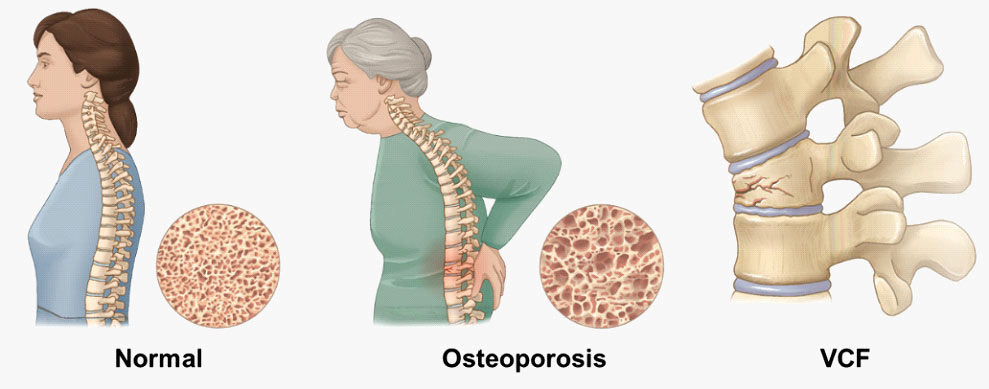
Cause
The primary cause of vertebral compression fractures is osteoporosis, also known as osteoporotic vertebral compression fracture (OVCF). Pressure on or against the vertebrae in your spine may cause your spinal bones to break and collapse. As bones naturally weaken with age, fractures can occur even during routine activities like standing up, sneezing, coughing, or sudden twisting.
Trauma or injury (such as falls or car accidents) and cancer (when tumors spread to the spine and weaken the bones) are less common causes.
- Osteoporosis: Your bones naturally weaken with age. Weakened bones are more likely to fracture. Severe osteoporosis fractures may happen while doing daily activities like getting out of a car, sneezing, coughing or twisting suddenly.
- Injuries or accidents trauma: This could include falls, car accidents or other types of physical trauma.
- Cancer: Cancerous tumors can spread to your spine, weaken your vertebrae and cause the bones to break.
Risk Factors
You may be more at risk of osteoporotic vertebral compression fracture (OVCF) if you:
- Are female and have been through menopause.
- Have osteoporosis or other conditions that weaken bone density.
- Are 50 years of age or older.
- Have a history of vertebral compression fractures.
Effects
Long-term complications of OVCF may include:
- A forward-curving spine with a hunched-over appearance (kyphosis).
- Problems controlling your bladder or bowels.
- Chronic pain that may persist even after the fracture has healed.
- Increased risk of future fractures due to weakened bone structure
Diagnosis and Tests
Your healthcare provider will perform a physical examination to assess your symptoms and identify the source of pain. During the exam, your provider:
- Checks your spine’s alignment and your height and posture.
- Gently presses on different areas of your back to identify the source of pain.
- Evaluates neurological function for signs of nerve compression, such as numbness, tingling, or muscle weakness.
Your provider will also recommend imaging tests to see pictures of the bones, muscles and soft tissues in your back. These imaging studies include:
- X-rays, CT scans, or MRIs to visualize spinal fractures, assess bone integrity, and detect potential complications.
- Dual-energy X-ray absorptiometry (DEXA) scan to evaluate bone mineral density and assess osteoporosis severity.
In some cases, your provider may find a compression fracture while performing an imaging test for another reason.
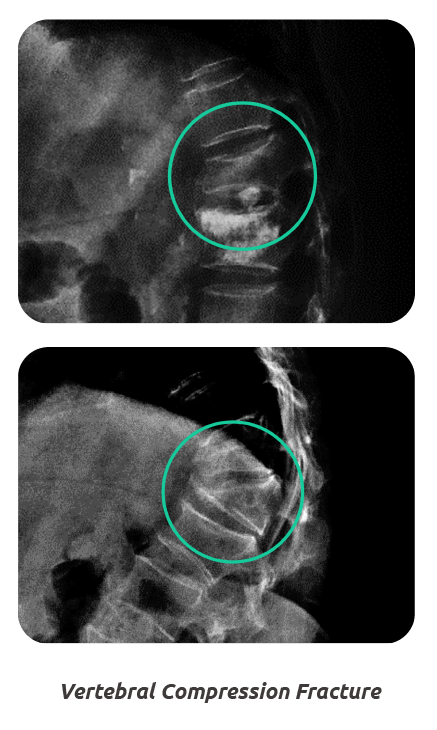
Treatment
Non-surgical treatment
- Bracing: Spinal orthoses such as a Jewett brace or thoracic-lumbar-sacral orthosis (TLSO) provide structural support and help stabilize the spine during healing.
- Pain management: NSAIDs or short-term opioid therapy may be used for pain relief, but long-term opioid use is generally avoided.
- Osteoporosis treatment: Bisphosphonates, calcium, and vitamin D supplements may be prescribed to improve bone density and reduce the risk of recurrent fractures.
- Physical therapy: Physical therapy: Targeted exercises improve spinal stability, posture, and flexibility while reducing pain and preventing further complications.
Surgical options
⦁ Vertebroplasty and balloon kyphoplasty surgery:
Vertebroplasty (VP) and balloon kyphoplasty (BKP) are earlier-generation vertebral augmentation procedures.
Vertebroplasty (VP) stabilizes the fractured vertebra by injecting bone cement directly into the affected area. However, it does not restore lost vertebral height.
Balloon Kyphoplasty (BKP) improves upon VP by first inflating a balloon within the vertebra to create a cavity before cement injection. This helps restore some vertebral height and reduces kyphotic deformity
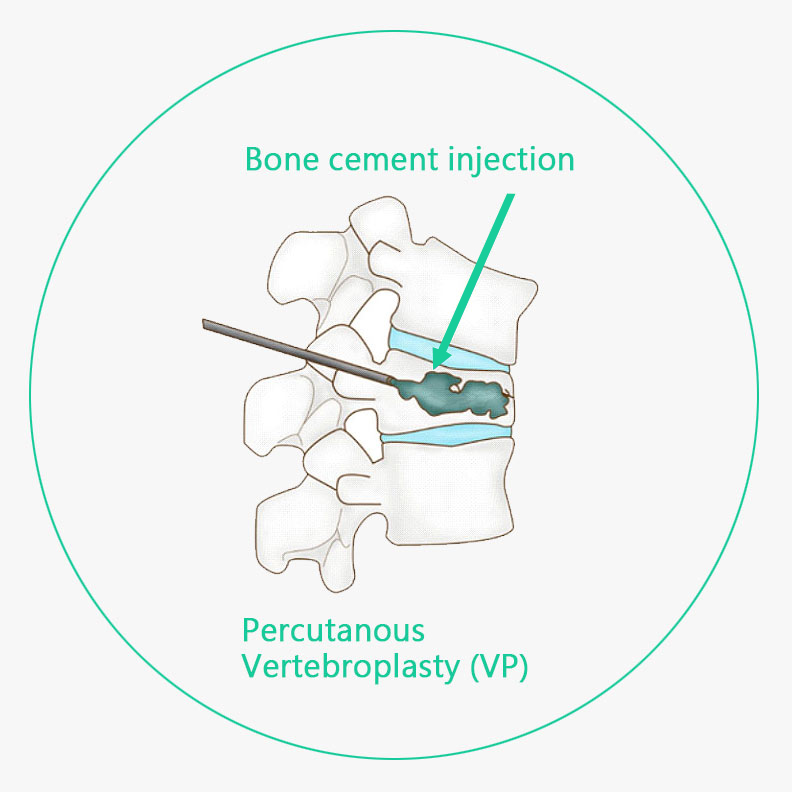
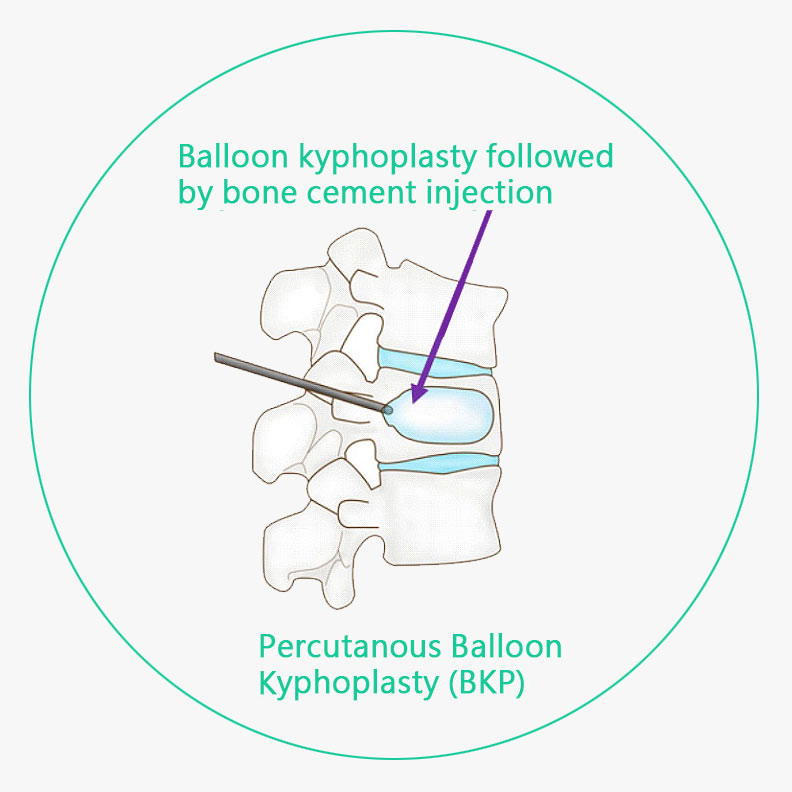
Tripod-Fix vertebral augmentation surgery:
Tripod-Fix is an advanced next-generation vertebral augmentation system specifically designed for wedge fractures. It provides superior vertebral height restoration and stability compared to VP and BKP, while reducing the risk of vertebral collapse associated with traditional cement-only injections.

X-ray of PMCF study
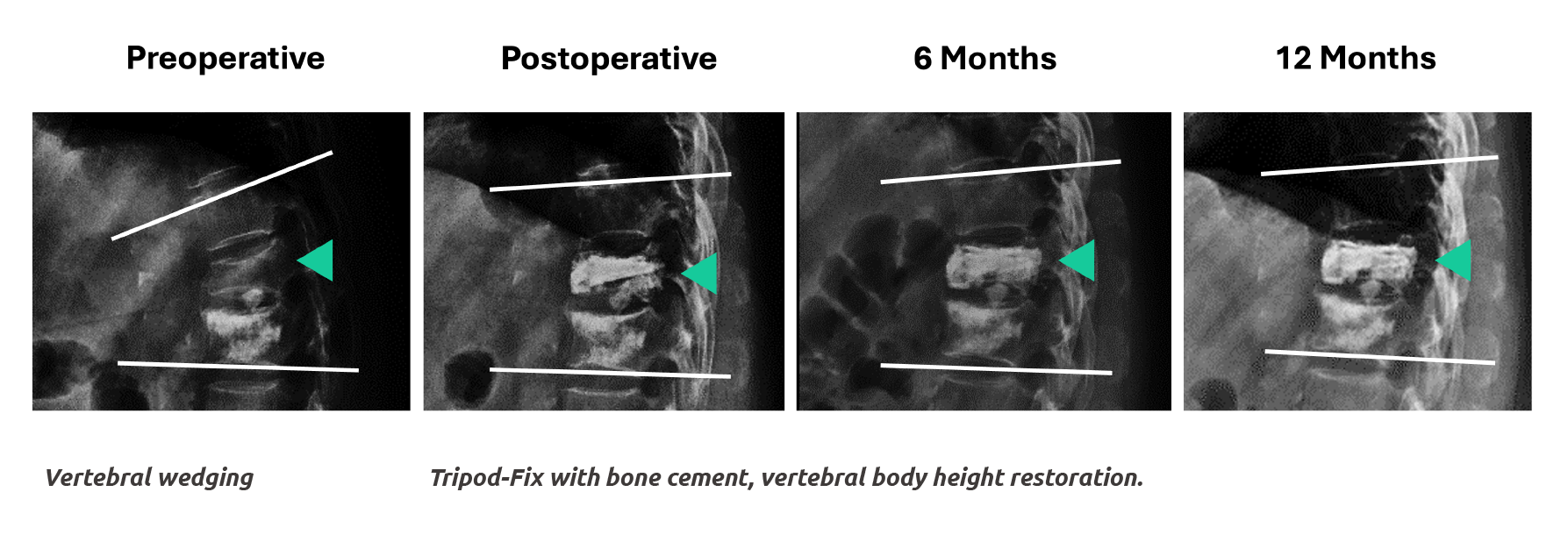
Q&A
If you have a compression fracture, you may want to ask:
What type of fracture do I have?
Your doctor will determine if it’s a mild, moderate, or severe compression fracture using imaging tests.
What treatment do you recommend for my condition?
The treatment plan depends on the severity of your fracture, bone health, and symptoms. It may include pain management, bracing, physical therapy, or surgery if necessary.
Do I need surgery, or can I recover with non-surgical treatments?
Many compression fractures heal with conservative treatment, but surgery (vertebroplasty, kyphoplasty, or Tripod-Fix) may be recommended for severe pain or progressive deformity.
How does Tripod-Fix differ from traditional bone cement treatment?
Tripod-Fix is a third-generation vertebral support device that not only stabilizes the vertebra but also restores vertebral height before controlled cement injection. Unlike traditional cement-only treatments that merely fill the fracture site, Tripod-Fix optimizes cement distribution, reducing surgical risks and long-term complications.
How long does Tripod-Fix take to recover after surgery?
Most patients experience immediate pain relief and can resume activities shortly after surgery. However, full recovery time depends on overall health and the extent of the procedure.
Which patients are suitable for Tripod-Fix?
Tripod-Fix is ideal for patients with osteoporotic vertebral compression fractures (OVCF), particularly those seeking to minimize surgical risks while achieving better spinal stability and quality of life.
How can I prevent future fractures?
Strengthen bones with calcium, vitamin D, and weight-bearing exercises. Medications may help if you have osteoporosis. Fall prevention strategies can also reduce fracture risk.
When can I return to normal activities?
Recovery time varies. Some patients improve in weeks, while others need months. Your doctor will advise on activity levels based on your healing progress.
